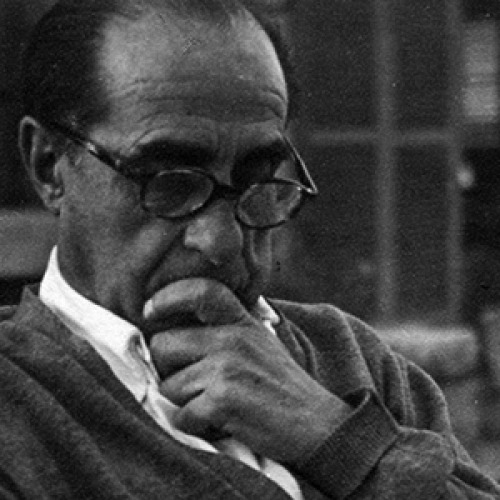CÁRDENAS PASTOR
Ignacio de Cárdenas Pastor was the son of Ramon Cardenas Padilla, natural Havana journalist who had emigrated in the late nineteenth century to Madrid and belonged to the Creole nobility. Ignacio was one of the first students of the Colegio del Pilar and studied architecture at the School of Madrid, where he graduated in 1924. He was the brother of Manuel de Cárdenas Pastor, one of the leading architects of the first third of the twentieth century and Ramon de Cardenas, lawyer, football player and fourth president of Atletico Madrid.
Just completing his studies he was hired by the newly created National Telephone Company of Spain as head of the Department of Buildings. In 1925 he traveled to New York, where in the company of the chief architect of IT & T, Louis S. Weeks, began working on the plans of the headquarters of Gran Vía.
As head of the architecture of Telefonica, he participated in the conception and design of the most important, such as Plaza de Catalunya in Barcelona, Plaza de Castelar in Valencia, Avenida de Buenos Aires in Bilbao or Avenida de la Independencia in Zaragoza plants. He applied varied styles, from neo-baroque Gran Via rationalism of the small center of Leon or the central building of the zaragozano Telefónica.
During the Spanish Civil War, he remained in Madrid, carefully noting the damage suffered its most prominent as a result of artillery fire work. Due to its republican sympathies, he was exiled in France (Haute Savoie and Bayonne) and was refined by the College of Architects of Madrid.
As with many Spanish families, war divided the numerous descendants of Ramon Cardenas. Gonzalo Rodriguez Cardenas (1904-1954), son of Manuel and architect, was Director of Devastated Regions, a body set up after the war by the Franco government to rebuild the populations destroyed by the fighting. Gonzalo de Cardenas invited his uncle to collaborate on the project of building Bancaya (p. 1947, c. 1949-1953), a skyscraper housing located on the corner of Avenida de America and Maria de Molina in Madrid. After this joint project, Ignacio Cardenas signed some works of smaller size, but their activity never regained the prewar rate.
Just completing his studies he was hired by the newly created National Telephone Company of Spain as head of the Department of Buildings. In 1925 he traveled to New York, where in the company of the chief architect of IT & T, Louis S. Weeks, began working on the plans of the headquarters of Gran Vía.
As head of the architecture of Telefonica, he participated in the conception and design of the most important, such as Plaza de Catalunya in Barcelona, Plaza de Castelar in Valencia, Avenida de Buenos Aires in Bilbao or Avenida de la Independencia in Zaragoza plants. He applied varied styles, from neo-baroque Gran Via rationalism of the small center of Leon or the central building of the zaragozano Telefónica.
During the Spanish Civil War, he remained in Madrid, carefully noting the damage suffered its most prominent as a result of artillery fire work. Due to its republican sympathies, he was exiled in France (Haute Savoie and Bayonne) and was refined by the College of Architects of Madrid.
As with many Spanish families, war divided the numerous descendants of Ramon Cardenas. Gonzalo Rodriguez Cardenas (1904-1954), son of Manuel and architect, was Director of Devastated Regions, a body set up after the war by the Franco government to rebuild the populations destroyed by the fighting. Gonzalo de Cardenas invited his uncle to collaborate on the project of building Bancaya (p. 1947, c. 1949-1953), a skyscraper housing located on the corner of Avenida de America and Maria de Molina in Madrid. After this joint project, Ignacio Cardenas signed some works of smaller size, but their activity never regained the prewar rate.
+
-
-
NameIgnacio CÁRDENAS PASTOR





